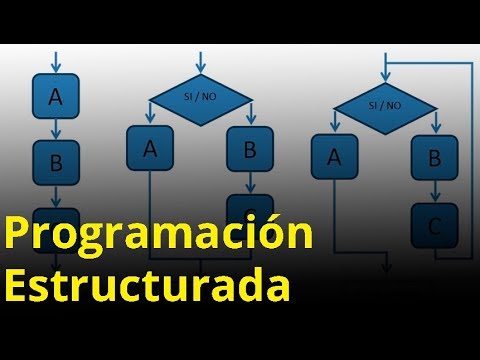What is structured programming: principles and advantages
Structured programming is a fundamental methodology in software development, based on the logical and orderly organization of algorithms. In this article, we will explore the principles and advantages of structured programming, and how it can improve efficiency and code quality. If you want to delve into the world of structured programming and understand why it is so important, keep reading. You will be surprised at the benefits it can bring to your software projects.
What are the advantages of structured programming
What is structured programming: principles and advantages
Structured programming is a programming paradigm that is based on the logical and orderly organization of source code. It focuses on the use of control structures, such as sequences, loops, and conditionals, to develop programs efficiently and easily understandable.
One of the main advantages of structured programming is its clarity and readability. By using well-defined control structures, the code becomes easier to understand and maintain. This facilitates collaboration between development team members and reduces errors.
Another important advantage is modularity. In structured programming, programs are divided into modules or subroutines, making it easier to reuse code and solve problems more efficiently. These modules can be developed and tested independently, which speeds up the development and debugging process.
Additionally, structured scheduling promotes efficiency in resource use. By using logical control structures and avoiding excessive use of unconditional jumps, program performance is optimized. This results in faster execution times and more efficient use of memory.
Structured programming also encourages the development of robust and reliable programs. By using well-defined control structures and avoiding the use of unstructured instructions, the chances of errors are reduced and errors are easier to detect and correct.
What is structured programming and what are its characteristics
What is structured programming: principles and advantages
Structured programming is a programming paradigm that is based on the idea of breaking a program into several smaller, easier-to-understand units of code. In this article, we are going to explore what structured programming is and what are its main features and advantages.
Structured programming focuses on the use of control structures, such as loops and conditionals, to organize the flow of execution of a program. This allows the program to be more readable, maintainable, and easier to debug. Furthermore, structured programming is based on the following fundamental principles:
1. Decomposition: Decomposition involves breaking a program into smaller, more manageable modules. Each module is responsible for performing a specific task and can be reused in different parts of the program.
2. Sequencing: Sequencing refers to the sequential execution of instructions in a program. Instructions are executed one after another in the order in which they appear, unless control structures are used to change the flow of execution.
3. Selection: Selection is the process of making decisions in a program. Conditional control structures, such as if-else, are used to execute different blocks of code based on a given condition.
4. Iteration: Iteration involves repeating a block of code multiple times until a certain condition is met. Loops, such as for and while, are used to implement iteration in structured programming.
Now that we have understood the basic principles of structured programming, we can explore the advantages that this approach offers:
1. Readability: Structured programming makes the code more readable and understandable for programmers. By dividing a program into smaller modules and using clear control structures, you make the flow of execution easier to understand.
2. Maintainability: Due to the modularity of structured programming, programs are easier to maintain and update. Changes to one module will not affect other modules, simplifying the task of bug fixes and software updates.
3. Depuration: The programing
What is structured programming summary
What is structured programming: principles and advantages
Structured programming is a programming paradigm that is based on the logical and orderly organization of a program into small units of code called structures. These structures include sequential instructions, decisions and repetitions, and allow you to create efficient and easy-to-understand algorithms.
One of the fundamental principles of structured programming is the use of a single input and a single output in each structure. This means that each structure has a well-defined entry point and exit point, making it easier to understand the flow of the program.
Structured programming is also based on the use of control structures such as decisions and repetitions. Decisions allow you to take different paths based on a condition, while repetitions allow you to execute a block of code multiple times.
Structured programming has several advantages. First of all, it makes the code easier to read and understand. By breaking the program into smaller, logical structures, it is easier to follow the flow of the program and understand what each part does.
Additionally, structured programming improves the modularity of the code. By breaking the program into independent structures, it is easier to reuse and maintain the code. It also makes debugging easier, since errors are usually confined to a single structure.
Another advantage of structured programming is its efficiency. By using control structures such as repetitions, repetitive tasks can be performed more efficiently. Additionally, by avoiding the use of unconditional jumps, program performance is improved.
And thus concludes our journey through the fascinating world of structured programming! Now you know that it is not just a bunch of lines of code, but a logical and orderly approach to building robust and efficient programs. In addition, we have told you all the advantages that this methodology has to offer. So now you know, if you want to be the architect of amazing programs, don't hesitate to apply the principles of structured programming! Until next time, code warriors!


Post Comment